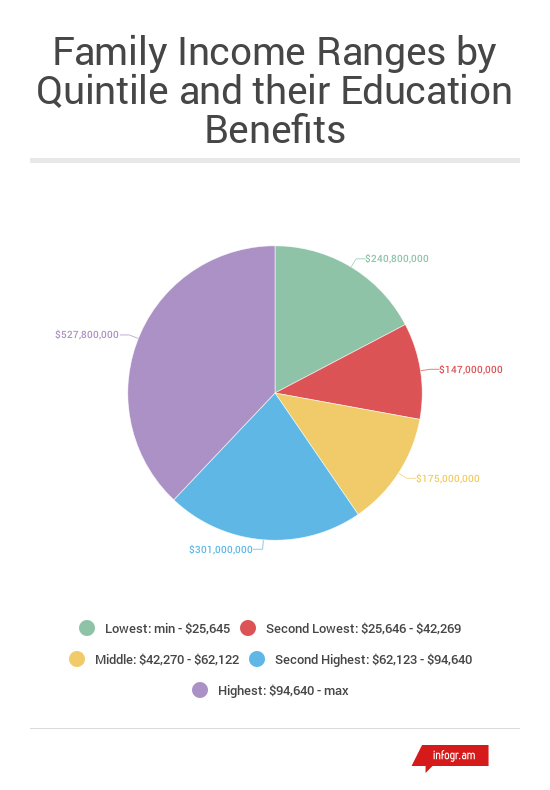Federal funding for post-secondary education primarily benefits higher-income families, according to a report released by the Parliamentary Budget Officer (PBO) May 5.
The PBO, an independent government finance watchdog, estimated roughly 60 per cent of college and university students in the last 10 years have come from families sitting in the two highest after-tax brackets. In 2015, the two highest tax brackets were earners making $62,123 to $94,640 and up.
These families have received more money from the government for education through various tax credits and saving plans compared to families with lower incomes.
The largest portion of this money comes from “human capital formation,” which includes tuition, education, and textbook tax credits, as well as the Registered Education Savings Plan (RESP) and Canada Education Savings Program.
Upper-class families have benefited from the current system because they can easily afford to put money into savings and pay for education and textbooks, the report said.
“I think the report confirms a lot of what we’ve already been saying,” said Bilan Arte, national chairperson for the Canadian Federation of Students (CFS).
The CFS has argued against the system of tax credits and savings plans such as the RESP in the past, saying wealthy families receive disproportionate amounts of money under the current system.
In 2013, the CFS said in a report on RESPs that there was an average gap of $4,530 in savings between low and high-income families.
“We need to think of a fundamental overhaul of how we are approaching students’ financial aid,” Arte said. “We’d like to see a government that is focused not only on providing up-front grants to students, rather than spending close to $1.3 billion on the RESP program.”
Wilfrid Laurier University professor Christine Neill said “pretty much anyone who’s ever looked at these issues of how the tax credits function actually believed they should be abolished.”
However, there are signs the federal government is beginning to make changes to the current post-secondary funding system.
The 2016 federal budget outlines plans to improve the Canada Student Grant program and provide low-income students with an extra $1,000 in grants, and middle-income students with an additional $400. Students also won’t have to repay their debts until they are earning $25,000 a year, according to the budget.
The federal government has also said they plan to eliminate the textbook and education tax credits that caused disparity between low and high-income families, but not the exisiting tuition credit.
The PBO report estimated these combined factors would increase federal spending on education to $15.7 billion by 2020-21. The changes “will likely make post-secondary education more affordable for some Canadians,” the report said.
“I think it’s a step in the right direction, but I think it’s a step in the current framework we’re in,” said Colin Birkett, a fourth-year Carleton student who said he comes from a middle-income family.
The CFS has been vocal on the issue of tuition fees, which according to Statistics Canada, have been rising faster than inflation since the 1980s. Arte said this makes access to education even more difficult for students with lower and middle-income backgrounds.
Canadian students paid an average of $6,191 for tuition in 2015-16; Ontario currently has the highest average tuition while Newfoundland and Labrador have the lowest, according to figures from Statistics Canada.
Arte said there wouldn’t be such a variation between provinces if there was a universal vision on higher education, adding there are “broader societal gains” to be had from a more-educated generation of youths.
She said she believes it is possible to re-direct funds away from programs such as RESPs and tax credits, as provinces such as Quebec have already done. This would increase access to education for more Canadians, Arte added.
“We can make a case for, and actually build enough public resources to eliminate tuition fees altogether,” she said.






